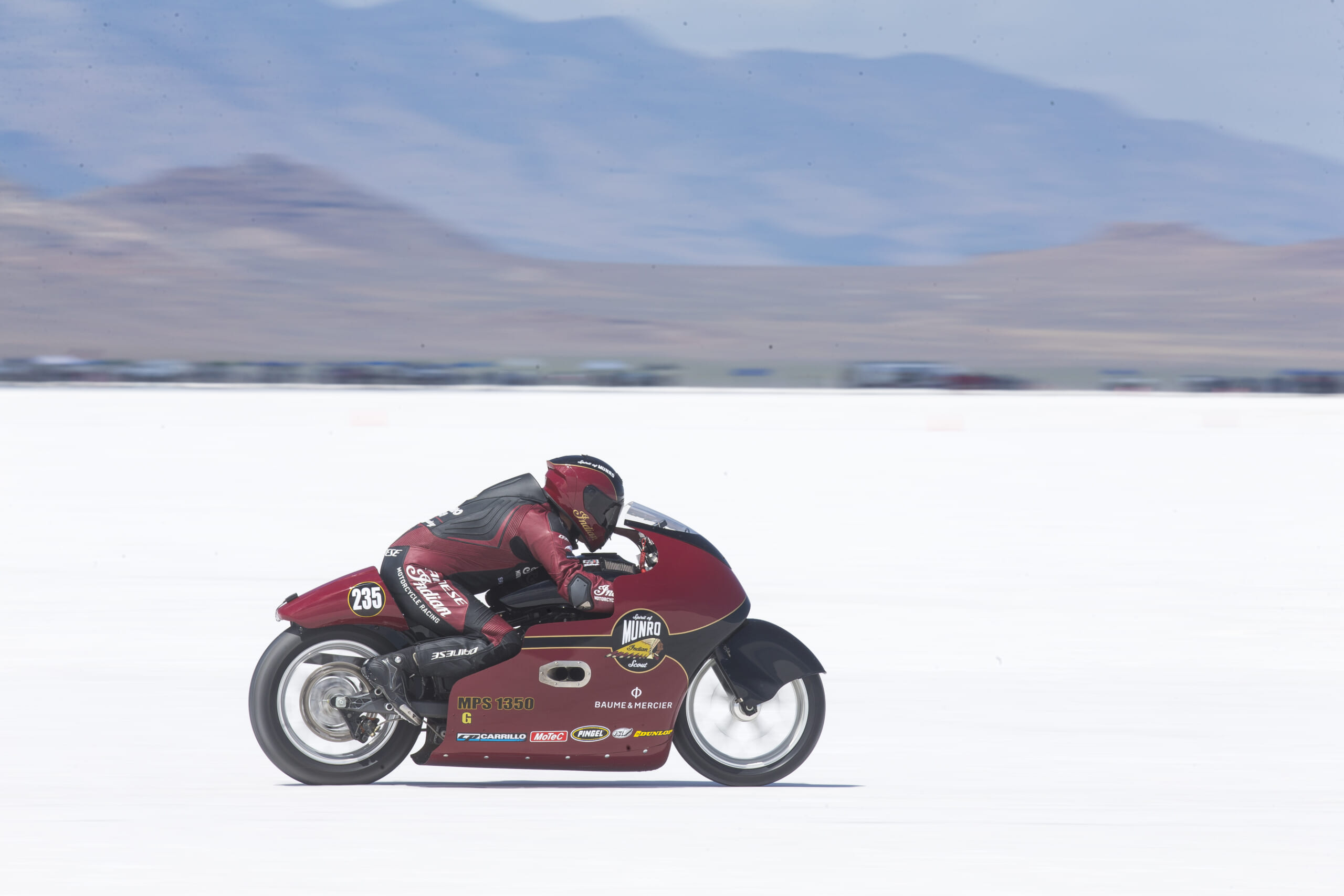Lee Munro and This Fire-Breathing Indian Motorcycle Are Headed to the Bonneville Salt Flats to Hit an Insane 200 MPH
His legendary uncle, Burt Munro, tamed “the world’s fastest Indian.” Now it’s his turn.
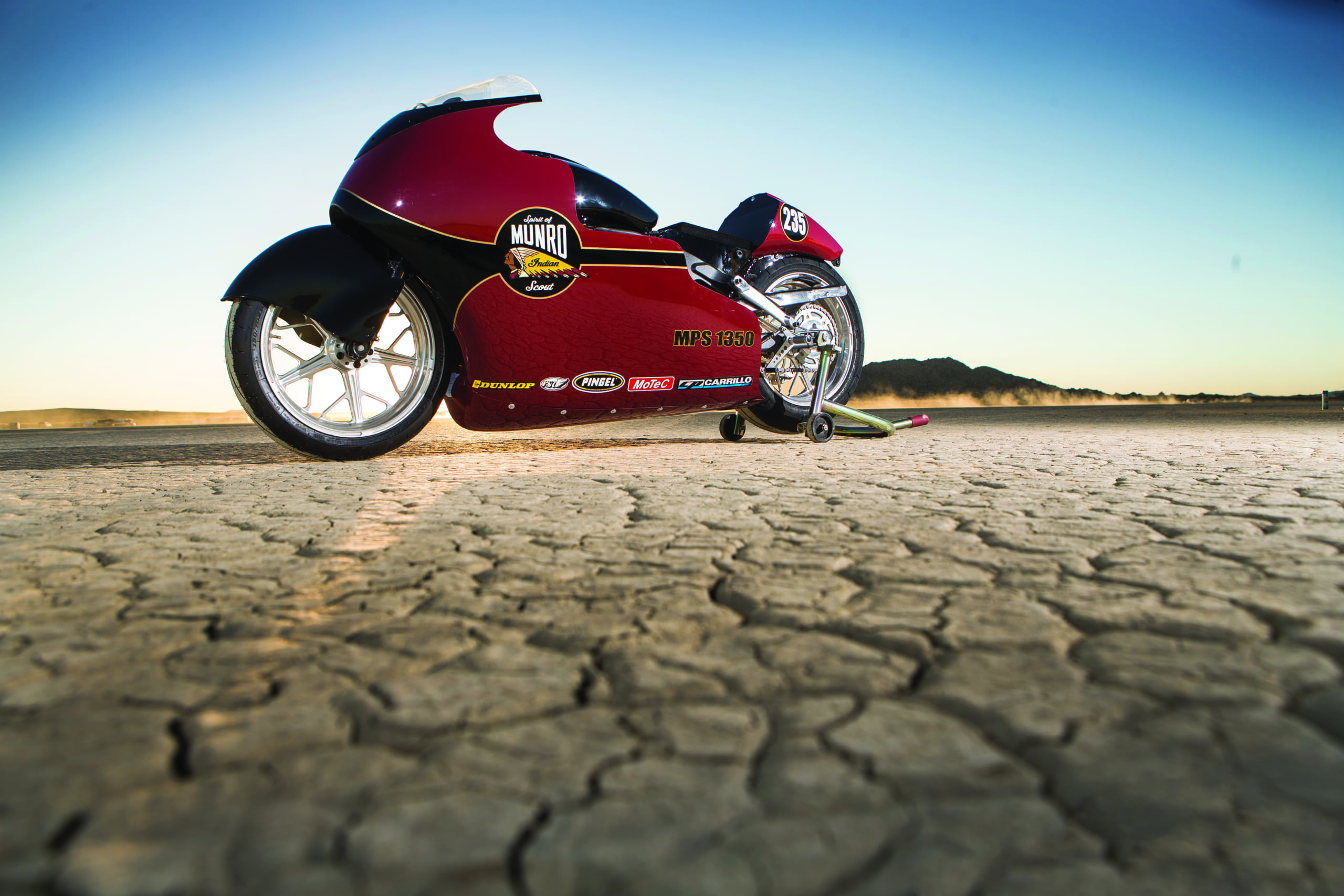
Presented by Indian Motorcycle
Six percent slippage is the most rear wheel spin you can have if you want to stay upright when you’re knocking on the door of 200 miles per hour on a two-wheeled missile fired across Utah’s Bonneville Salt Flats.
And did you know that you can eyeball the temperature of molten metal when casting hot-rod engine parts for your land speed record machine just by its color?
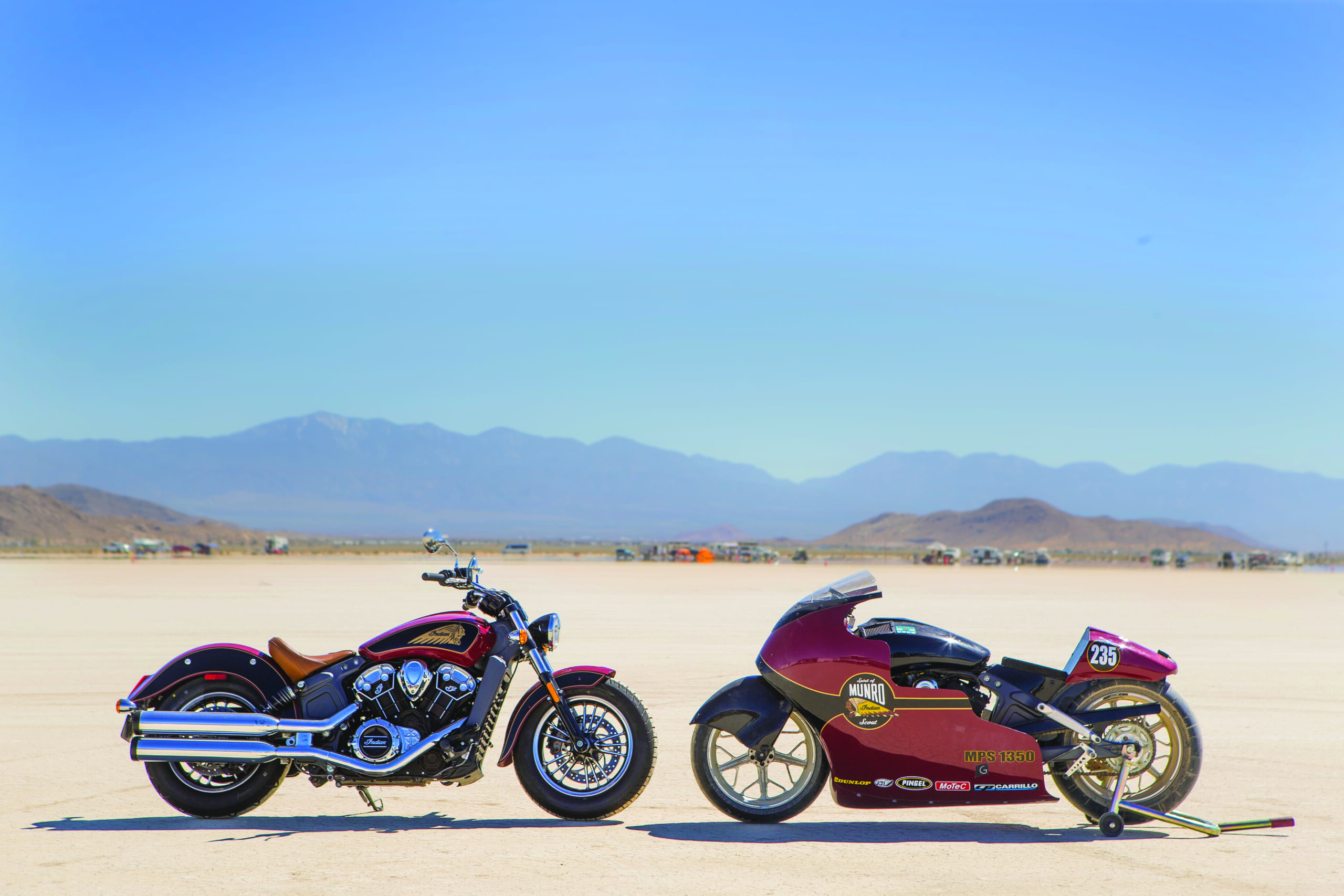
These are the kinds of things that New Zealander Burt Munro knew when he was setting motorcycle speed records a half-century ago, and they are some of the things his great-nephew Lee Munro knows, too.
But maybe the most important things they share are a blazingly fast Indian motorcycle beneath them and a right wrist able to twist the throttle open until the bike rips the atmosphere quicker than any before it.
Burt Munro’s story was big enough to merit a feature film version, 2005’s The World’s Fastest Indian, with Sir Anthony Hopkins as the determined Kiwi record-setter.
Now, 41-year-old Lee Munro is gunning for a sequel to Burt’s 1967 record run. The team from Indian Motorcycle will target a new speed record on August 13, this time using a modern Indian Scout with factory-backed engineering rather than a 1920 Scout with home-brewed hardware and Kiwi grit.
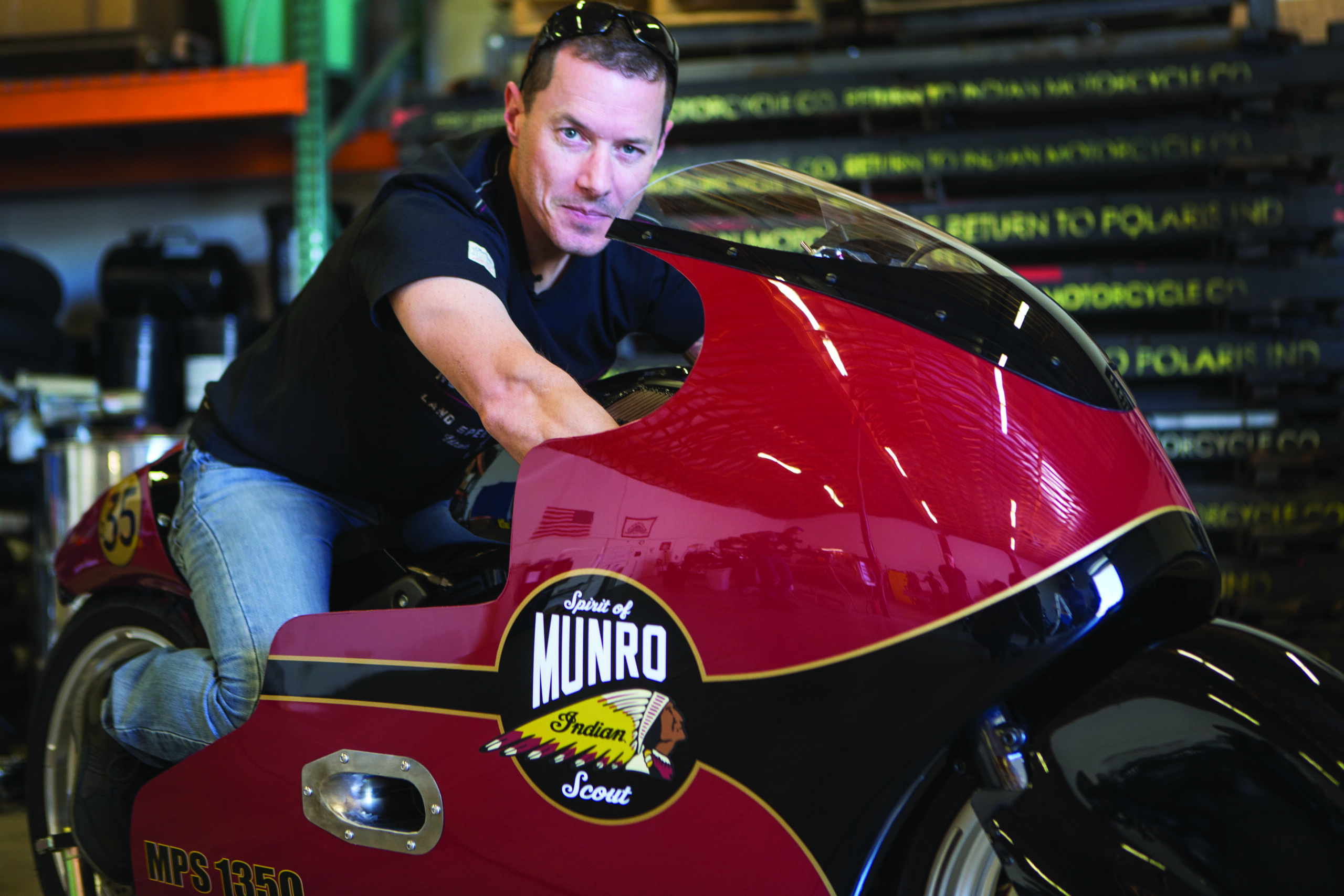
Lee has worked in a metal foundry, so he could cast his own custom pistons, like his uncle Burt did. And he lives in Invercargill, Burt’s hometown. “I feel like we’ve walked the same path, one hundred years apart,” Munro observed.
This despite the fact that Lee was only two years old when Burt died, so he never knew his great-uncle. But like Burt, Lee was born to ride motorcycles, and when the film The World’s Fastest Indian came out, it gave Lee a look at Burt’s accomplishments.
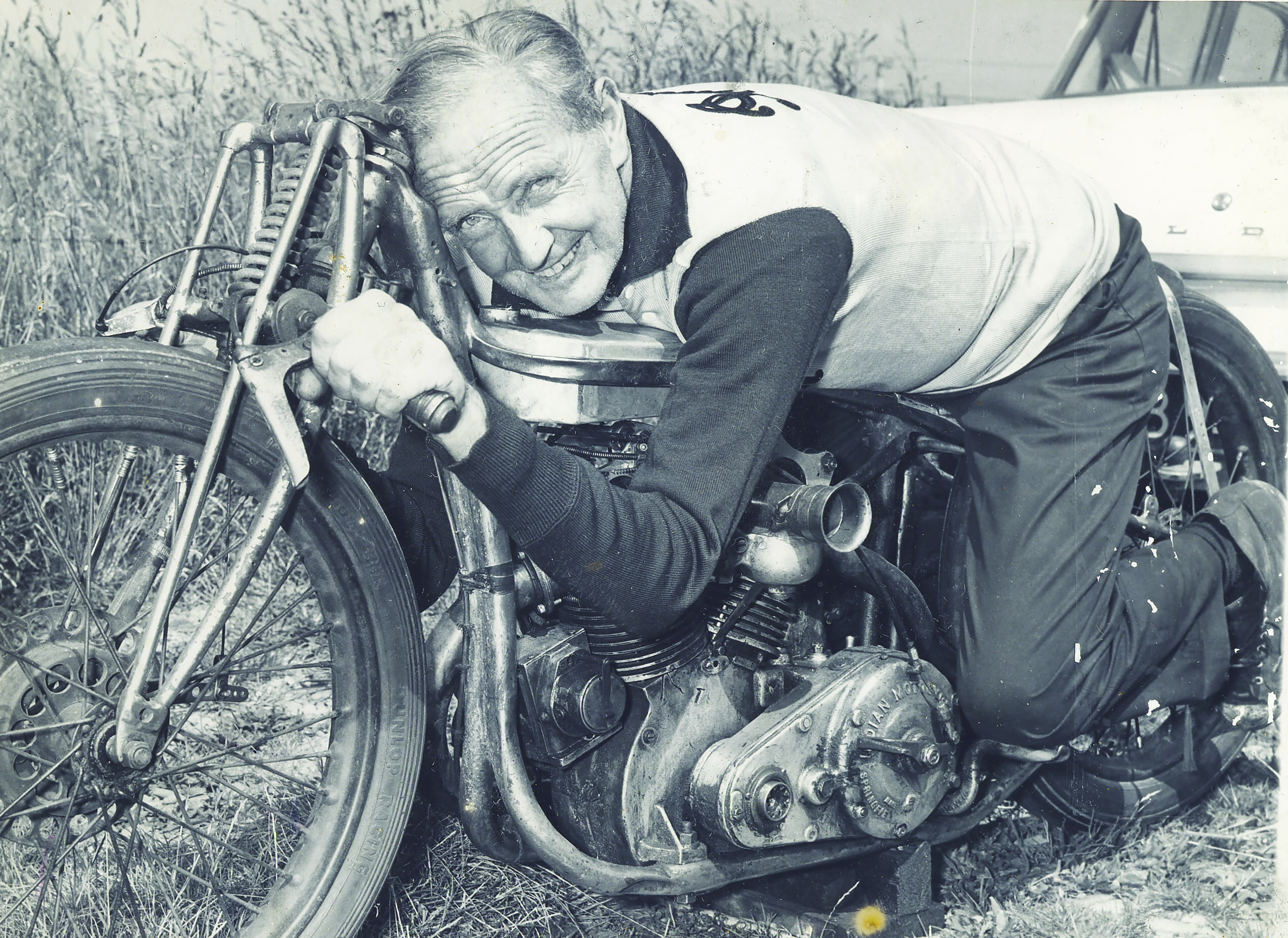
Sitting in the movie theater watching the film, Lee’s then-girlfriend kept nudging him and pointing out similarities between Burt (as portrayed by Hopkins) and himself. Lee’s grandfather also saw the movie and pronounced it accurate.
“Anthony Hopkins doesn’t look like Burt, and he doesn’t sound like Burt, but he did a good job,” Lee recalls his grandfather saying. Lee probably sounds more like Burt, thanks to the same local dialect, but surely looks less like him than Anthony Hopkins did, considering Burt’s age of 68 when he set his fastest record in 1967.
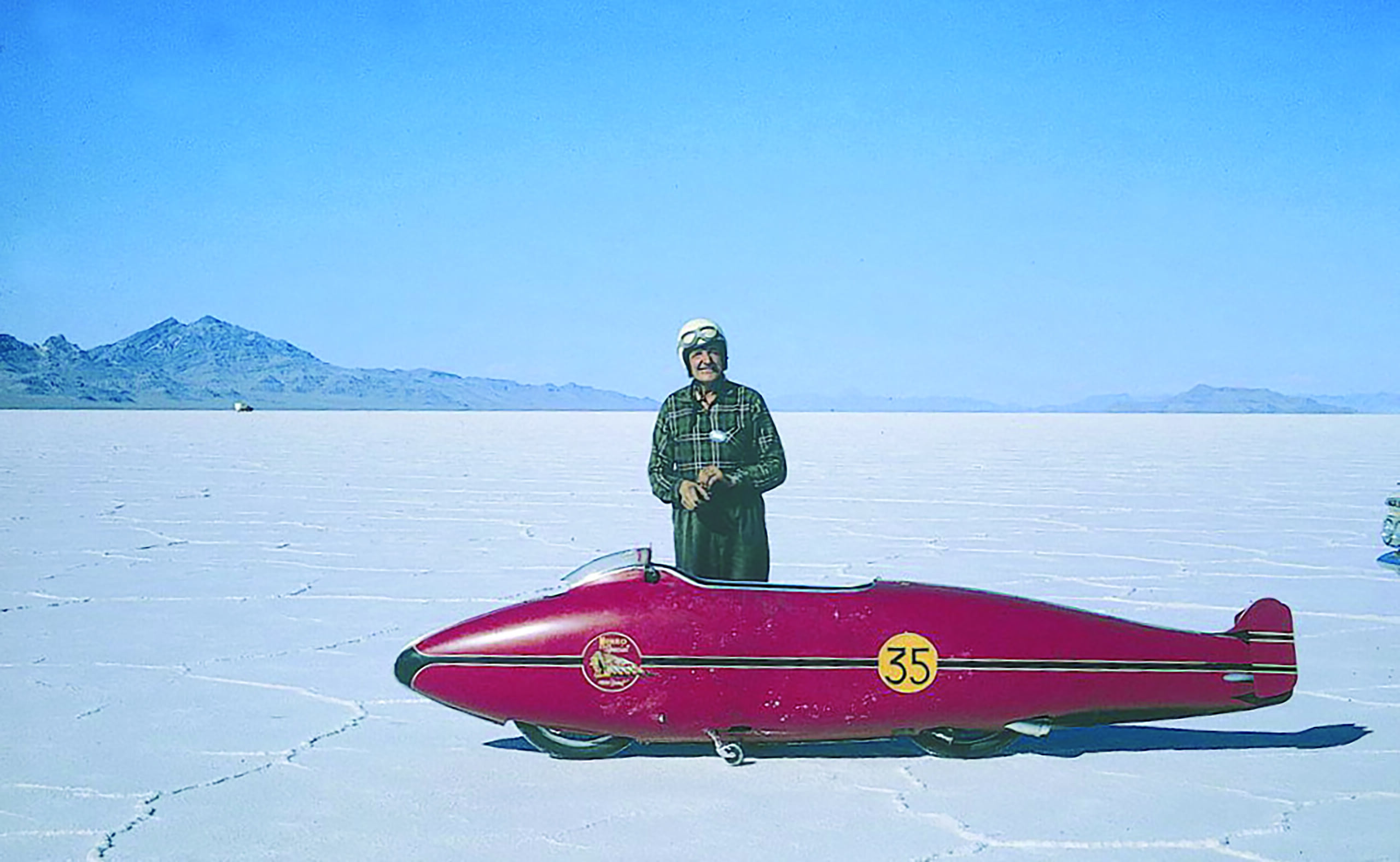
For all the similarities, the big difference will be in the Indian motorcycle each rode. Burt’s Indian was ancient when he started building it to break records, and it didn’t get any younger as he made it progressively faster with better engine parts and streamlined bodywork that let it cut through the air at 183.59 mph. That set the record for motorcycles of less than 1,000 cc engine displacement and wearing bullet-shaped bodywork.
Lee, in contrast, has the engineering might of Indian Motorcycle’s factory behind his mount, a modified Scout that will compete in the category for engines of less than 1,350 cc displacement. This Scout will also use just a simple wind-deflecting front fairing and tapered tail, rather than the all-encompassing streamliner bodywork Burt employed.
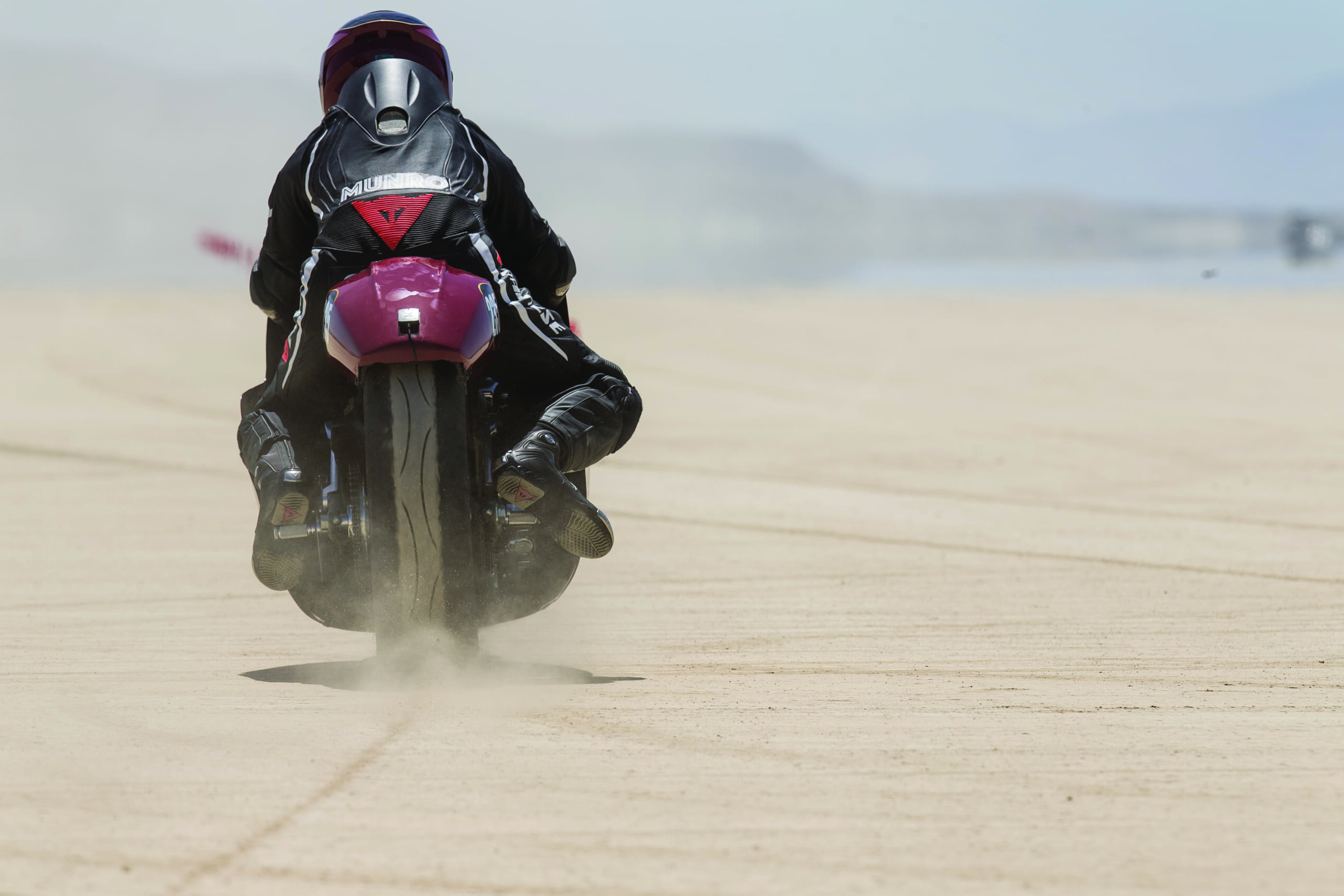
The differences are important, because it means that Lee’s run, 50 years after Burt’s last record was set, is a tribute ride and not a bid to remove Burt from the record books after all these years.
“The Indian Scout is just a phenomenal machine,” Munro enthused. “It is a very well thought-out package. I’ve been privileged to be asked to ride it.” (We loved the Scout too, by the way.)
Indian’s engineers put in volunteer hours working on the bike for the record run, but it is the official factory backing that gives this new effort a great shot at a spot in the record books.
“Burt Munro is a legend in Indian Motorcycle history. His legacy transcends motorcycles and symbolizes the much broader drive to push beyond conventional limitations to achieve what is seemingly impossible,” said Reid Wilson, Marketing Director at Indian Motorcycle.
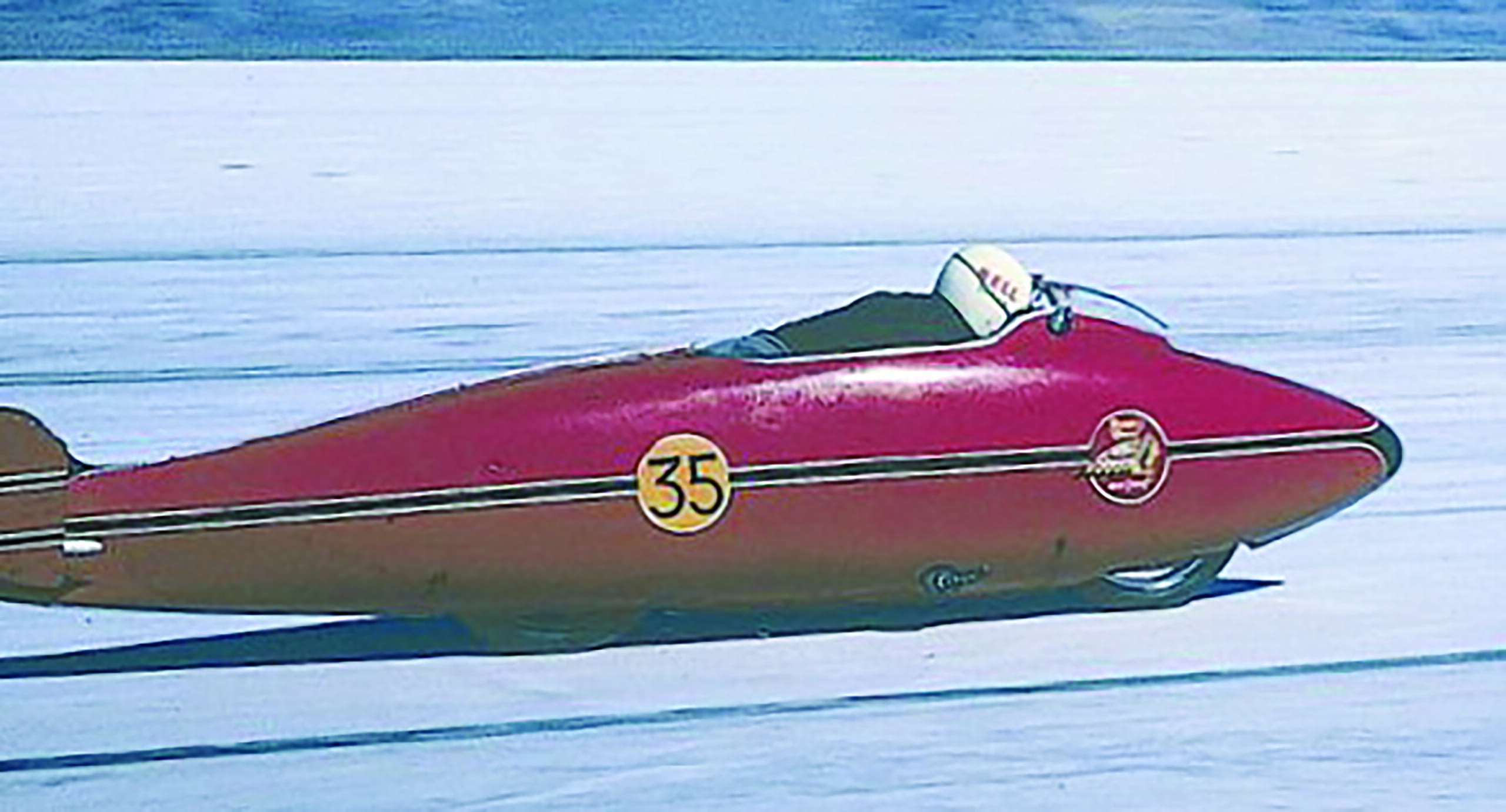
“It’s an honor to recognize and pay tribute to the 50th anniversary of his historic accomplishments on the Bonneville Salt Flats,” Wilson continued. “And there’s no better way to do so than with a commemorative run on a modern Scout Streamliner with Burt’s great nephew.”
Burt’s record was 183 mph, but he made successful runs at over 200 mph, according to Lee. Trouble is, for a record to count, you have to make two runs in quick succession in opposite directions, to account for any wind and slope.
Due to various technical problems, Burt was never able to back up a 200 mph pass with a second run, so he never got an official time at that speed, though he did personally go more than 200 mph.
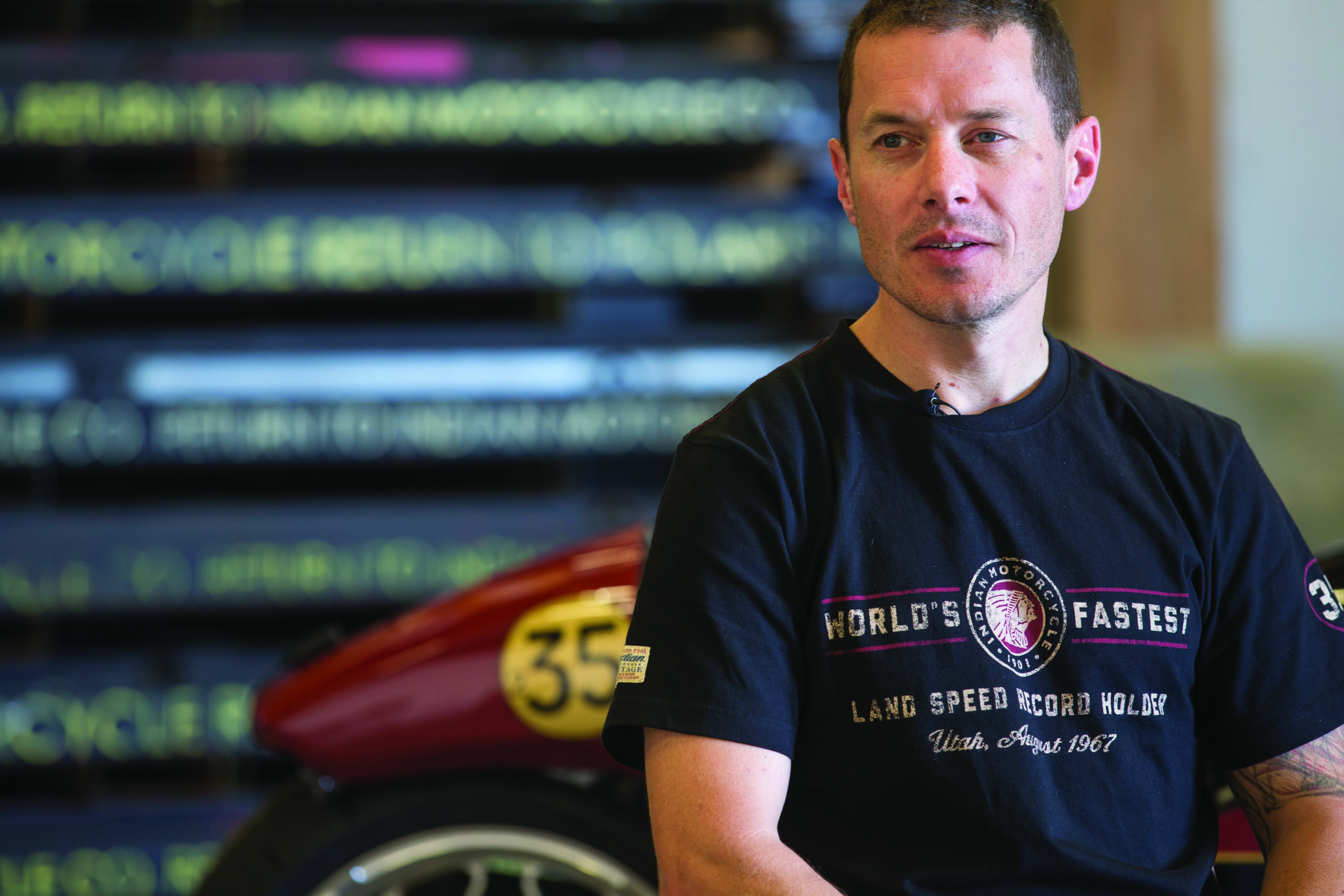
In June test runs at California’s El Mirage dry lake bed, Lee went 186.681 mph, achieving a class record and acquainting him with both the bike and straight-line record riding. Lee’s background is in road racing on tracks such as his home circuit of Ruapuna, near Christ Church. “We don’t have any dry lakes in New Zealand,” he noted.
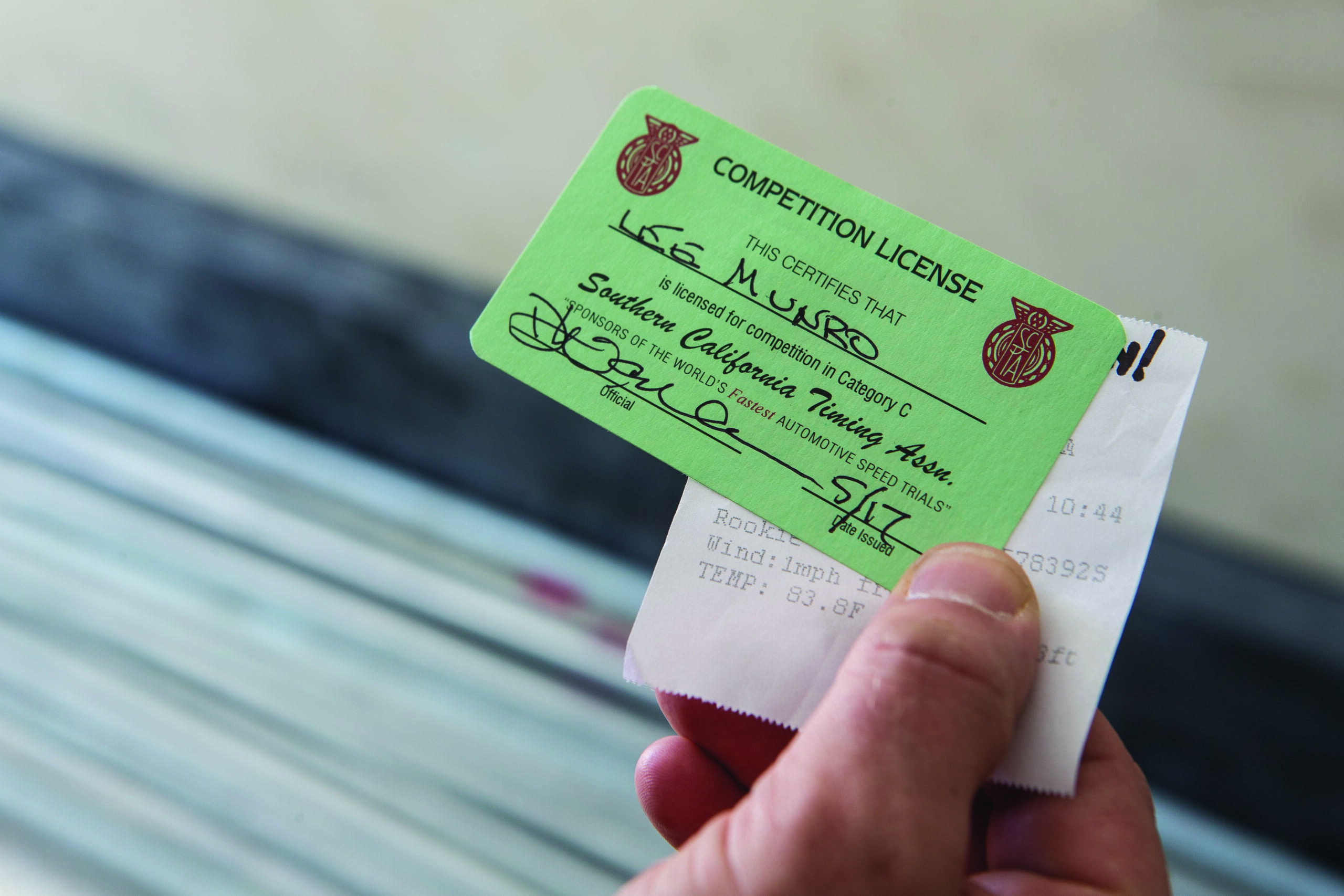
The new test will be topping 200 mph on the salt surface at Bonneville, where the issue of wheelspin will be critical.
It might seem nutty to think of spinning the rear wheel at speeds near 200 mph, but all of the Scout’s horses will be shouldering against wind that seems to turn nearly to stone at such speed, and the bike will struggle for traction pushing against the wall of air.
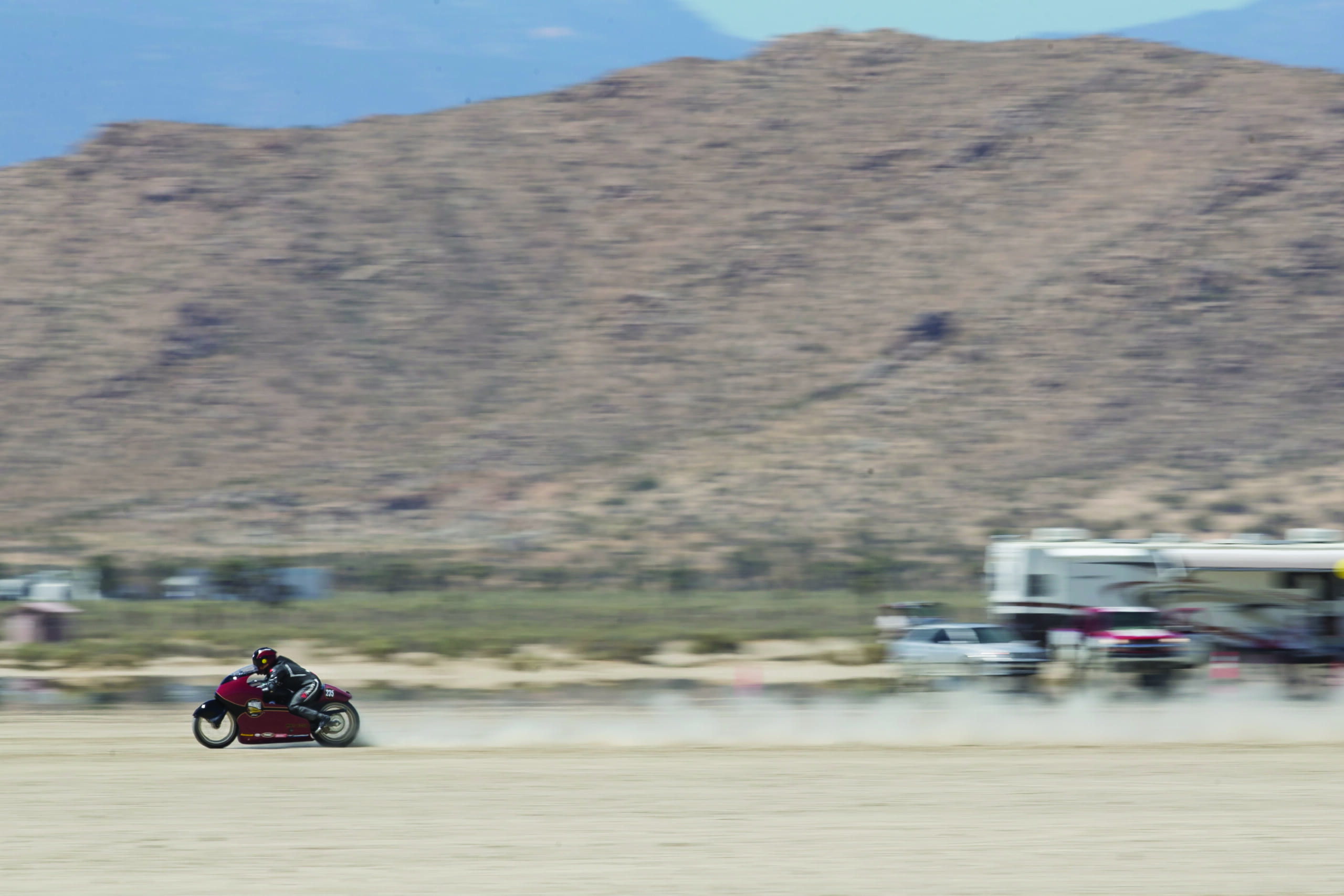
“The salt is very hard this year and quite bumpy,” according to Munro. “It isn’t a perfect track.”
In the end, all the team can do is prepare the Scout to its maximum. All Munro can do is twist the throttle open and hope. “Mother Nature is the variable,” he concluded.
Burt knew that, too.
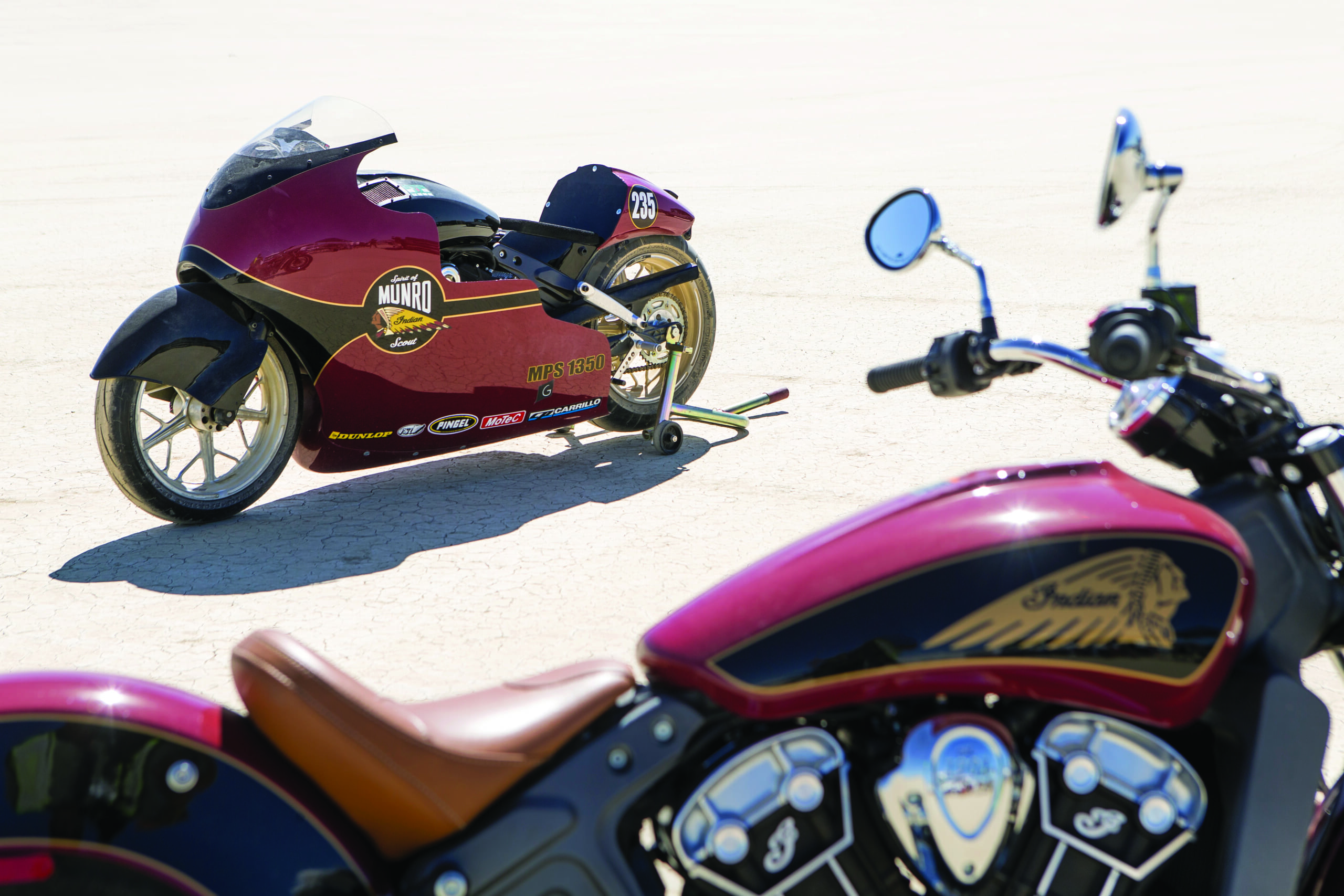
UPDATE 8/16/17: After a hard few days on the unforgiving, bumpy salt, Lee Munro and the Indian team topped Burt’s old speed with an official run of 186.415 mph. An earlier pass of 191.28 mph was negated by a timing error on the follow-up run. On an additional, last effort, Munro aborted the run because of the poor condition of the salt.
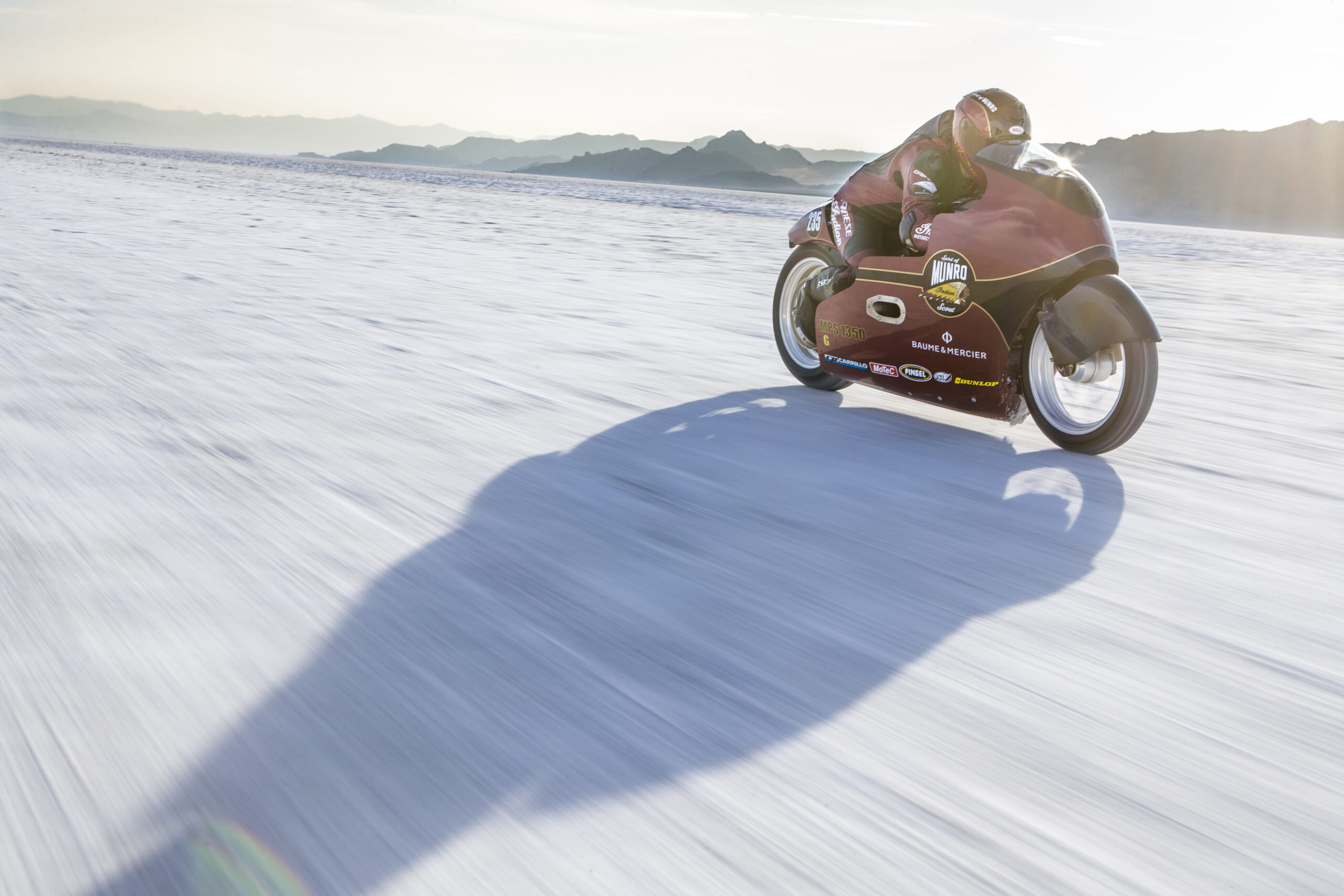
“It was my greatest honor to represent Indian Motorcycle in such an incredible tribute to my great uncle on this historic 50th Anniversary,” said Munro. “We may not have had the results we were after, but piloting a modified Indian Scout on the same salt as my great Uncle Burt will forever be one of my most-cherished experiences. I’m looking forward to future runs and more success with my teammates and friends at Indian Motorcycle.”
